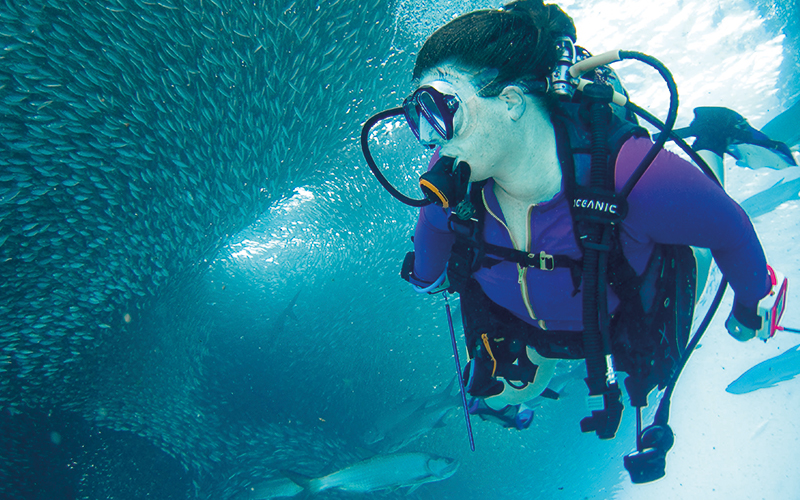Adventure Sports Safety
Typically Gap years are a time for adventure, and more often than not, Gap Year travellers decide to indulge in some adventure sports to help compliment that ‘once in a lifetime’ trip. Most of the time, these are completely safe and run by credible activity operators, but nothing is 100% risk free, so it helps to be well informed about how to stay safe, before you decide to go with certain operators.
The most popular high risk adventure activities taken by gap year students are;
- Diving,
- Skydiving,
- Bungee Jumping and
- White Water Rafting.
Out of all these activities which would you pick as the most dangerous? If you picked Bungee jumping, as most do, you would be wrong! The adventure sport listed above with the highest number of recorded fatalities is in fact skydiving, approximately 60 fatalities a year.

“The biggest adventure you can take is to live the life of your dreams.” Oprah Winfrey
The risks with diving
According to PADI, over the twenty year period between 1989 and 2008, there were 806 recorded fatalities. (Approximately 40 per year) Considering there were nearly 16 million PADI certifications issued in that time, diving can still be considered a safe sport, but it does go to show however, nothing is ever without some element of risk.
So how do you negate that risk?
The number one cardinal rule is to always dive within your limits, and never go diving without the proper training – and certainly never go diving alone. An Open Water course will train you to dive to a maximum depth of 18 metres, if this is the limit of your certification, it is important to not to exceed this, no matter how tempting it may be to chase a turtle into the depths. The reason for this is that after 18 metres, the physics of diving changes – more pressure, more nitrogen uptake in your bloodstream and more risk. Many people new to diving are not necessarily aware of this, so for your own safety, please stick to your limits. If you do go diving, it is important to check out the dive shop before you get in the water, especially if you are visiting certain parts of Africa and South America where dive equipment is not easily serviceable. Does the depth Gauge work? When was the equipment last serviced? A simple rubber O-ring costing 10 pence failing can cause problems at 18 metres. So it pays to ask the question. If the Divemaster or instructor cannot tell you when the equipment was last serviced, go to another dive shop.
The risks with Sky Diving
The idea that jumping out of a plane with nothing but a parachute and an instructor attached to you can be safe seems like an oxymoron. Surprisingly, skydiving is not that dangerous – providing the equipment is in good working order and the instructor is suitably experienced. Ask the question: how many jumps has the jump master completed? The answer should be in excess of 4,000.
Many skydive operators have jump masters with over 20,000 jumps, so you know you are in safe hands. There are approximately 60 deaths per year in the sport on average, but it has to be said, the vast majority of these do not occur with tandem jumps, they are with solo parachute jumpers during landings. The majority of these accidents (according to www.dropzone.com which keeps a database of fatalities in order to improve safety standards) happen in the United States – not Australia or New Zealand, where the majority of UK gap year travellers do their jumps.
Risks with White Water Rafting
White Water Rafting is a really fun activity but even smaller grade rapids can be dangerous if you do not have the correct equipment.
While all outdoor recreation has inherent risks, most white water accidents are preventable. If you want to stay safe, these are the things you can do;
Wear a Life Jacket no matter how good a swimmer you are or what boat you are in. 33% of all white water rafting accidents could have been prevented with a life jacket. Many fatalities have happened in very easy rapids, it is often the unseen obstacles that can be dangerous – namely the rocks under the water.
It goes without saying but avoid alcohol and illegal drugs. Alcohol slows your reaction time and general alertness.
Go with operators that are established and know the river well. Guides that are trained correctly can anticipate rapids, and know to avoid rafting when the conditions are not right. Extreme weather and water creating very high flows and chilly water temperatures can cause unnecessary risk to rafters.
Bungee Jumping
Bungee jumping is a very scary activity. It goes completely against all common sense and self-preservation, but surprisingly bungee jumping is the safest adventure sport of them all. AJ Hackett, the world’s biggest bungee jump operator have had over a million jumpers in the last 10 years. Fatalities? None. Those are good odds!
The reason the fatalities have been avoided is due to the strict safety checks and policies used by the company. A bungee cord, which is nothing more than thousands of thin elastic strands entwined together like rope, is designed to take the strain of 1,000 jumps before the elasticity of the cord becomes stretched, so the company replaces the cord after 400 jumps, remaining well within the limits.
Unfortunately, AJ Hackett does not operate all bungee centres across the world, so if you are planning on doing a jump in other countries, ask the question – how many jumpers are used for one cord. If you don’t like the answer (or the operator does not know), walk away.
Finally, it has to be said all these activities are very popular and even though some fatalities occur, you are statistically very safe. You are much more likely to be in danger in a car or crossing a street so don’t be put off! If you want to jump out of a plane, do it! Just know what to look for before you go.
Written by Oliver Bray









